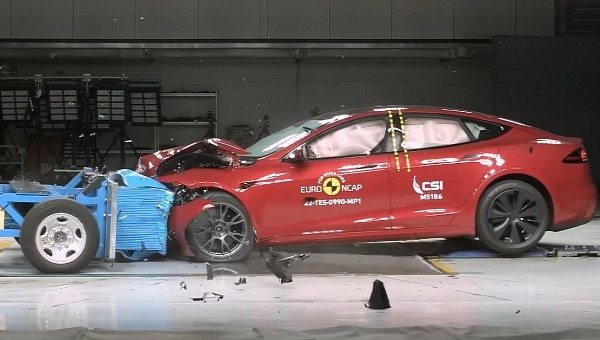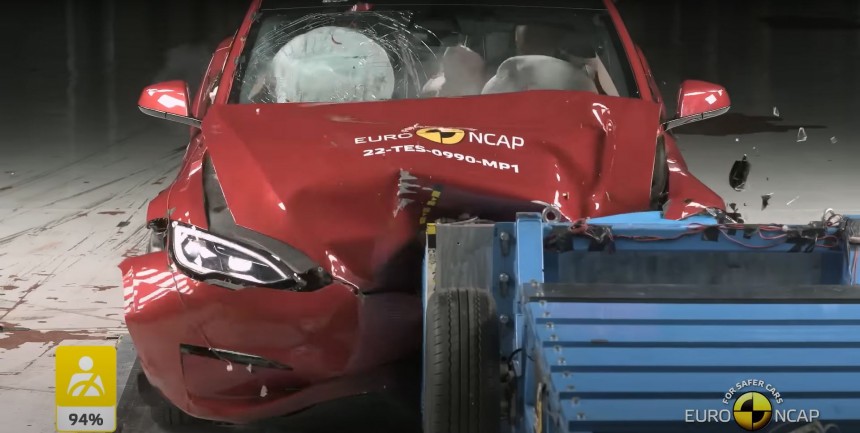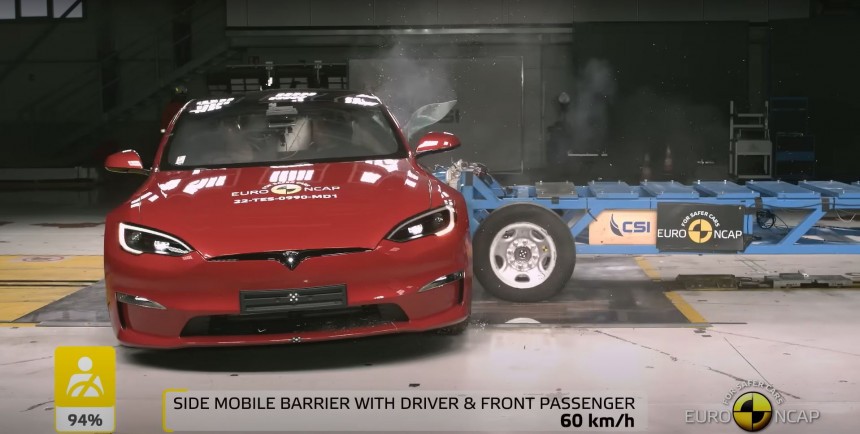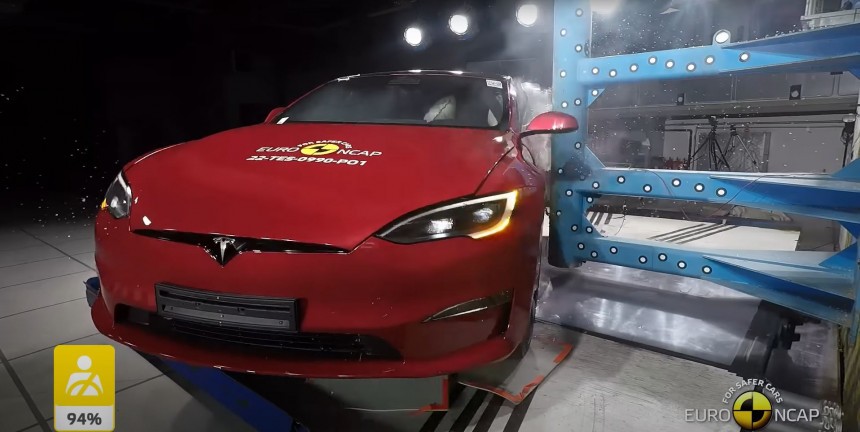Will I be safe in case a crash happens? What about those traveling with me? Can I trust all these new technologies, and should I pay for them? These are questions that more and more people ask themselves when looking for a brand-new or slightly used car. Manufacturers and regulators alike understood this, and that’s how safety ratings became very important in the last couple of years. So, here’s what we learned last year.
Car buyers around the world are increasingly interested in how new automobiles can protect them from the aftermath of all kinds of accidents. Most want to know that the vehicle they are buying is built properly and comes with the right trialed and tested assistance systems. Some may even base their buying decision on how a vehicle scored in standardized safety tests.
Add the fact that we now have a plethora of people creating various types of content on this subject and the fact that technology is slowly but surely becoming more important than what’s hiding under the hood, and it’s becoming obvious that automotive safety is rapidly becoming a key subject for manufacturers, regulators, insurance providers, customers, and even middlemen.
So, what can a single year teach us about automotive safety? For most people out there, 12 months are not that many. For example, engineers working on various complicated projects like creating a new car may feel that a year is necessary only to develop the drivetrain. For others, this timeframe is enough to kickstart a whole new business that may conquer a sizeable share of the market. It’s all relative, in the end. But, in the context of an ever-growing focus on zero-tailpipe emission vehicles, safety is being transformed under our very eyes.
New cars that are battery-electric vehicles (BEVs) come with different challenges. Years of developing the internal combustion engine and the associated parts that come with it have led to improved results in the safety department. Absorbing the energy of a crash, for example, became a thing at which most manufacturers excelled.
But BEVs are generally heavier. They also have a different, simpler core structure. These aspects matter – a lot. They change many data points, and regulators together with the relevant agencies must keep up with the innovations so they can provide the necessary protection to consumers. Otherwise, we might end up with cars that have only one airbag and no ABS.
What’s curious is that this preoccupation may come mainly from people who intend to buy something that’s priced as new starting from well under-€25,000 (-$27,181). As such, we’re discovering that automotive safety isn’t something important only to well-off drivers.
The good news is that Euro NCAP conducted a record number of safety tests last year – 73! Out of those, 65 were for all-new models. This coincided perfectly with the organization’s 25th anniversary. It also showed that almost all carmakers are taking safety seriously – 50 of these newer tested vehicles returned a five-star score, while 15 received four stars.
Besides showing that China is ready to take the European car market by storm with its six new brands that went through all the testing phases and neither one of them disappointed, the organization also showed that EVs are becoming increasingly more common. They accounted for 34% of the new models tested. The all-electric market is expanding.
This extensive testing revealed that automakers are keen on installing an in-cabin driver monitoring system. These are mostly used to detect driver drowsiness and are important because the software can interpret the facial recognition data together with the driver’s inputs and can recommend periodical stops so the person behind the wheel remains attentive constantly while on the road. This feature is also paramount for advanced driver-assistance systems (ADAS) like adaptive cruise control with stop-and-go and lane centering. They can detect if you have a problem and may safely stop the car on the side of the road. Some vehicles will even call the emergency services and send out your location via GPS.
But with more cars on the road, the risk of a crash increases. Through last year’s testing, the organization discovered that automakers are more responsible. That’s why 47 out of the 65 new vehicles come with a center airbag which can reduce injuries in far-side crashes by stopping front passengers from colliding with each other. But keep in mind that the cars sent out for crash testing are well-equipped models and you may have to pay more to obtain the same level of protection.
Euro NCAP also assessed that vehicle weight is increasing, mainly because BEVs are heavier. The battery packs usually add the weight of two or even three passengers over the weight of an equivalent internal combustion engine (ICE) car. The organization says this is a growing concern and will continue advocating for “adequate energy absorbing structures and load paths working for different sizes of cars and push for more effective active safety systems.”
It has also been discovered that light commercial vans equipped with ADAS present themselves on the market with a “sizable performance and fitment gap for driver assistance systems compared to consumer cars.”
Looking at what’s tested today and the prerequisites that must be met for a 5-star score, we can conclude that the automotive industry has come a long way from when safety glass or three-point seatbelts were introduced. To put things better into perspective, keep in mind that crumple zones – the parts of the car that are meant to absorb the energy of a crash – became a feature in 1959.
Euro NCAP also decided to publish the best-in-class safety winners of 2022. None is from an established European automaker. They are as follows:
But 2023 is going to change the game for many companies. Euro NCAP delayed the implementation of its new testing protocols citing Brexit, the Ukraine crisis, the semiconductor shortage, and supply chain issues. The updated rules are now in effect. The next 12 months are going to be very interesting when it comes to safety testing.
Euro NCAP is sustained by its members. These are the German Automobile Club (ADAC), the German Federal Ministry for Digital and Transport, the British Department of Transport, the Dutch Ministry of Infrastructure, Luxembourg’s Ministry of Economy, the Regional Government of Catalonia, the Swedish Transport Administration, the French Ministry of Ecology, the Austrian Ministry of Climate, Energy, and Mobility, the Norwegian Public Roads Administration, the Federation International de l’Automobile (FIA), the International Consumer Research and Testing organization, the Thatcham Research organization, the Italian Automobile Club (ACI), Dekra Automobil, and the German Insurers Accident Research organization.
Add the fact that we now have a plethora of people creating various types of content on this subject and the fact that technology is slowly but surely becoming more important than what’s hiding under the hood, and it’s becoming obvious that automotive safety is rapidly becoming a key subject for manufacturers, regulators, insurance providers, customers, and even middlemen.
So, what can a single year teach us about automotive safety? For most people out there, 12 months are not that many. For example, engineers working on various complicated projects like creating a new car may feel that a year is necessary only to develop the drivetrain. For others, this timeframe is enough to kickstart a whole new business that may conquer a sizeable share of the market. It’s all relative, in the end. But, in the context of an ever-growing focus on zero-tailpipe emission vehicles, safety is being transformed under our very eyes.
New cars that are battery-electric vehicles (BEVs) come with different challenges. Years of developing the internal combustion engine and the associated parts that come with it have led to improved results in the safety department. Absorbing the energy of a crash, for example, became a thing at which most manufacturers excelled.
So, what has been discovered last year?
For starters, what the Insurance Institute for Highway Safety (IIHS) or the European New Car Assessment Programme (Euro NCAP) put to the test attracted more interest in 2022. The latter reported hundreds of thousands of crash testing views even for low-cost brands like the Renault-owned Dacia and its Duster crossover SUV or Spring EV hatchback. This is a sign that an increasing number of customers are more and more concerned about their next vehicle’s safety features.What’s curious is that this preoccupation may come mainly from people who intend to buy something that’s priced as new starting from well under-€25,000 (-$27,181). As such, we’re discovering that automotive safety isn’t something important only to well-off drivers.
The good news is that Euro NCAP conducted a record number of safety tests last year – 73! Out of those, 65 were for all-new models. This coincided perfectly with the organization’s 25th anniversary. It also showed that almost all carmakers are taking safety seriously – 50 of these newer tested vehicles returned a five-star score, while 15 received four stars.
Besides showing that China is ready to take the European car market by storm with its six new brands that went through all the testing phases and neither one of them disappointed, the organization also showed that EVs are becoming increasingly more common. They accounted for 34% of the new models tested. The all-electric market is expanding.
But wait, there’s more!
Since driving automation is perceived as the next great thing to be achieved by some of the world’s biggest carmakers, driver monitoring systems will become more prevalent soon. Euro NCAP, for example, discovered that almost 94% of the vehicles tested in 2022 had such a system installed.But with more cars on the road, the risk of a crash increases. Through last year’s testing, the organization discovered that automakers are more responsible. That’s why 47 out of the 65 new vehicles come with a center airbag which can reduce injuries in far-side crashes by stopping front passengers from colliding with each other. But keep in mind that the cars sent out for crash testing are well-equipped models and you may have to pay more to obtain the same level of protection.
Euro NCAP also assessed that vehicle weight is increasing, mainly because BEVs are heavier. The battery packs usually add the weight of two or even three passengers over the weight of an equivalent internal combustion engine (ICE) car. The organization says this is a growing concern and will continue advocating for “adequate energy absorbing structures and load paths working for different sizes of cars and push for more effective active safety systems.”
Looking at what’s tested today and the prerequisites that must be met for a 5-star score, we can conclude that the automotive industry has come a long way from when safety glass or three-point seatbelts were introduced. To put things better into perspective, keep in mind that crumple zones – the parts of the car that are meant to absorb the energy of a crash – became a feature in 1959.
All cars might have to become computers on wheels
Now, radars, cameras, sensors, and incredibly advanced software are trying to keep us as safe as possible while on the road. Not for cheap, of course! But progress isn’t achievable only with pennies on the dollar. Development and testing are costly, customers who want the latest and the greatest will have to pay. And you might have to, even if you don't want them. Carmakers are forced to make good systems like the previously mentioned ones standard. But we'll have to wait a little bit more before becoming concerned about money over safety.Euro NCAP also decided to publish the best-in-class safety winners of 2022. None is from an established European automaker. They are as follows:
- ORA Funky Cat – small family car;
- WEY Coffee 01 – large off-roader;
- Hyundai Ioniq 6 – large family car;
- Tesla Model S – executive car;
- Tesla Model Y – small off-roader.
But 2023 is going to change the game for many companies. Euro NCAP delayed the implementation of its new testing protocols citing Brexit, the Ukraine crisis, the semiconductor shortage, and supply chain issues. The updated rules are now in effect. The next 12 months are going to be very interesting when it comes to safety testing.
Euro NCAP is sustained by its members. These are the German Automobile Club (ADAC), the German Federal Ministry for Digital and Transport, the British Department of Transport, the Dutch Ministry of Infrastructure, Luxembourg’s Ministry of Economy, the Regional Government of Catalonia, the Swedish Transport Administration, the French Ministry of Ecology, the Austrian Ministry of Climate, Energy, and Mobility, the Norwegian Public Roads Administration, the Federation International de l’Automobile (FIA), the International Consumer Research and Testing organization, the Thatcham Research organization, the Italian Automobile Club (ACI), Dekra Automobil, and the German Insurers Accident Research organization.
Here are some Euro NCAP consumer favourites as revealed on https://t.co/irp5MRoriP.????#ncap #yearinnumbers #testingequipment #safety #forsafercars #howsafeisyourcar #saferroads #safety #roadsafety #drivesafely #cars #safercars #safety #safetyratings #consumerprotection pic.twitter.com/A1DFeTtXmW
— Euro NCAP (@EuroNCAP) January 26, 2023













